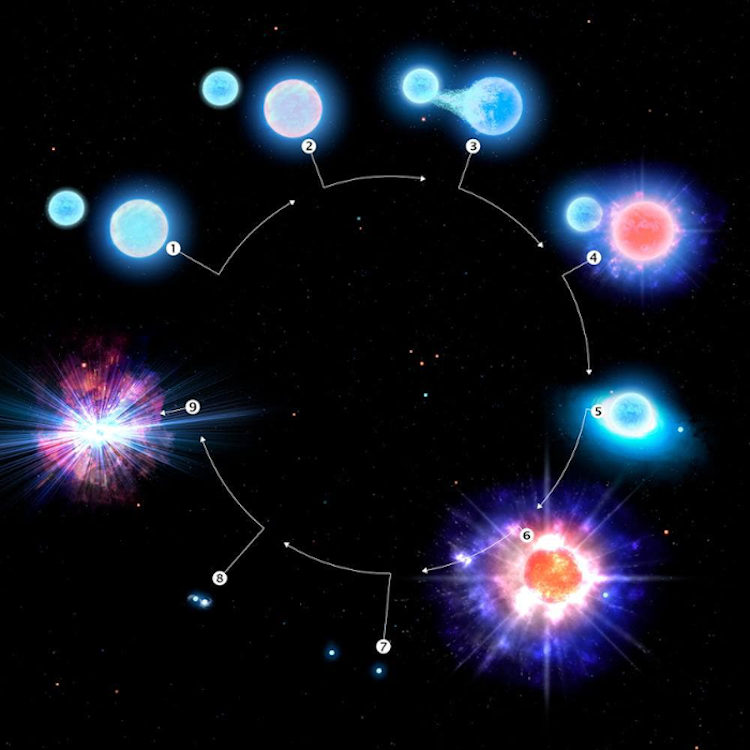
 Credit: CTIO/NOIRLab/NSF/AURA/P. Marenfeld
Credit: CTIO/NOIRLab/NSF/AURA/P. Marenfeld
Getting to the Gold
Gold and other complex, neutron-rich elements are believed to be formed by the mergers of neutron stars. The only identified example of this is the "Golden Merger", observed in 2017 both by gravitational wave and gamma-ray observatories. But how such weird neutron-star binary systems form is somewhat of a mystery. A recent study of a binary system called CPD-29 2176 containing a neutron star partnered with a hot, massive star may provide clues to unpacking this riddle. While other such high mass X-ray binaries are known, this binary is unusual, since the neutron star and the massive star move around each other in nearly circular orbits. Circular orbits are unexpected in high mass X-ray binaries, since the supernova explosion that forms the neutron star should be powerful enough to either disrupt the system entirely or leave behind a bound system with highly elliptical orbits. But CPD-29 2176's circular orbit indicates that the supernova that produced the neutron star was too wimpy to unbind the system or even to increase the ellipticity of the stellar orbits. Scientist suspect that such failed supernova might be produced by the exchange of matter between the binary companions before the supernova explosion. The general scheme is shown in the illustration above. A massive binary system consisting initially of a massive star, and an even more massive companion, form with circular orbits (step 1 above). The more massive star evolves first, and swells up, and the less massive star strips enormous quantities of matter from the evolved star, so that by the time the evolved star runs out of fuel and explodes as a supernova (steps 2 to 4), there's not enough mass left in it to produce a powerful supernova, and the star (somewhat gently) collapses into a neutron star. The binary now consists of the massive, unevolved star and the neutron star, still bound together in their circular orbits. The neutron star then strips matter from the companion, powering the X-ray emission we observe today. If enough matter is stripped from the companion, it too will produce a low-power supernova, leaving behind a binary system consisting of two neutron stars (step 7) still bound in orbit. But as the neutron stars orbit each other, they emit gravitational radiation, which causes the orbit to shrink (step 8), and eventually (step 9) the two neutron stars spiral together and merge, generating a "kilonova" explosion and producing gold and other heavy elements.
Published: February 6, 2023
<
HEA Dictionary ● Archive
● Search HEAPOW
● Other Languages
● HEAPOW on Facebook
● Download all Images
● Education ● HEAD
>

Each week the HEASARC
brings you new, exciting and beautiful images from X-ray and Gamma ray
astronomy. Check back each week and be sure to check out the HEAPOW archive!
Page Author: Dr. Michael F. Corcoran
Last modified Monday, 26-Feb-2024 17:22:03 EST


